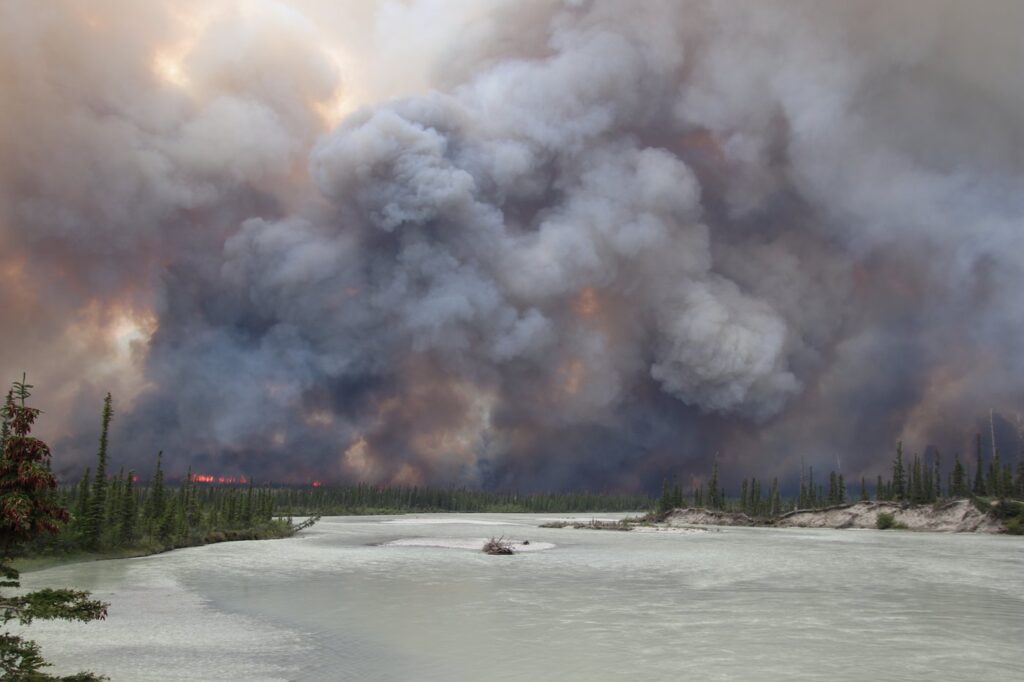
Recapping Alberta’s ‘relatively average’ wildfire season
November 11, 2022
By Scott Hayes, Local Journalism Initiative Reporter
 The Chetamon wildfire burns in Jasper National Park on Sept. 4, 2022. Photo: Parks Canada.
The Chetamon wildfire burns in Jasper National Park on Sept. 4, 2022. Photo: Parks Canada. There were 1,259 wildfires across Alberta this year, not including the Chetamon wildfire in Jasper National Park.
Even though the official end of wildfire season was Oct. 31, there were still 29 fires as of Tuesday, five of which started in the previous seven days.
Only of those active fires is classified as ‘being held’ and is located in the Rocky Mountain House Forest Area. The rest are ‘under control’, while none are ‘out of control’. That’s the current view as detailed on the Alberta Wildfire Status Dashboard.
That means there had been an average of 157 wildfires every month since the wildfire season started on March 1, or five new wildfires every day.
“Don’t be too surprised. Last year, we had 1,321 on this day,” said Melissa Story, community relations specialist with the Wildfire Management Branch of Alberta Forestry, Parks and Tourism.
That figure is nearly double what it was in 2020.
There were four Mutual Aid wildfires, which means that Alberta Wildfire offered assistance but was not the lead responding agency.
“In 2022, Alberta had a relatively average wildfire season,” Story said. “We’re right on par with the number of wildfires that we normally see. Our five year average is 1,110. We’re slightly above that painting, but not by much.”
The webpage offers a comprehensive overview of the wildfires, complete with a statistical breakdown of causes: 57.51 per cent of the current year wildfires are suspected to have been caused by humans, with 37.89 per cent by lightning. The remaining 4.61 per cent are still under investigation.
Story said that there have been 17 violation tickets issued this season, but that number is still subject to change as additional charges are still pending. She added that approximately 67 per cent of last year’s wildfires were human-caused with the majority resulting from campfires.
“We have seen a decrease in the number of human caused wildfires, which is fantastic for us.”
The webpage also surveys the total land area that was burned for each of the last five years. While this year’s 153,100 hectares is nothing to sniff at, it still pales against the 791,800 hectares lost in 2019. The five year average area, Story said, is 190,000 hectares.
For reference, the Chetamon Wildfire was most recently estimated to cover approximately 6,450 hectares. The Lac La Biche Forest Area had the greatest number of wildfires at 196 while the Fort McMurray Forest Area had the largest amount of area burned at 125,409 hectares. Fort McMurray also had the largest wildfire at 107,046 hectares.
There were 108 wildfires in the Edson Forest Area, 85 of which were caused by humans. The current wildfire danger is ‘Low’ but hunters officials are asking hunters and recreationalists to ensure that they fully extinguish their fires by soaking the ashes, stirring them and then soaking them again until they are cool to the touch.
Overall, Story said that the wildfire season got off to a pretty wet start with a lot of precipitation in the spring, but that it balanced out with a very dry summer and early autumn.
“Spring is typically when we see our most intense wildfire behaviour after the snow melts and before the trees turn green. It’s a very volatile time of year for us. With the rain that we saw this year, we were pretty much in the clear for the springtime,” she said.
“We did see a lot of periods of hot dry conditions, especially in the southern parts of the province, which elevates our fire danger. That started towards the end of July and into August, September, even into October. I mean, before we saw the snow here at the end of the month, our wildfire danger was still pretty high.”
She reminded everyone that the risk is still in the landscape and that everyone must take extra caution with campfires and other sources of ignition.
Scott Hayes is a Local Journalism Initiative Reporter for the Jasper Fitzhugh.
Print this page